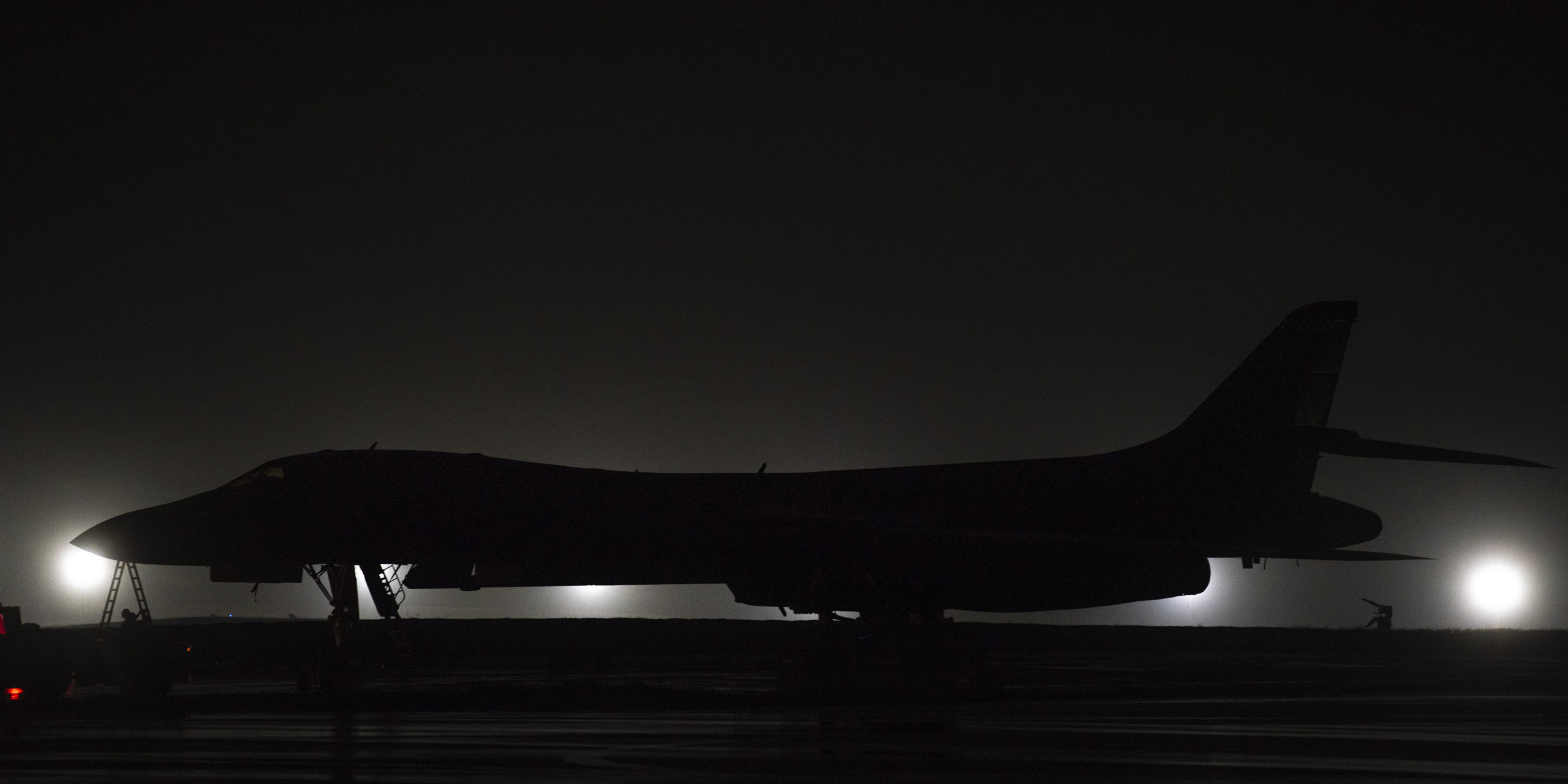Photo Caption: A 9th Expeditionary Bomb Squadron B-1B Lancer sits on the flightline at Anderson Air Force Base, Guam, May 1, 2020. Approximately 200 Airmen and four B-1s assigned to the 7th Bomb Wing at Dyess AFB, Texas, deployed to the Pacific in support of Bomber Task Force. The BTF is deployed to Andersen AFB to support Pacific Air Forces’ training efforts with allies, partners and joint forces; and strategic deterrence missions to reinforce the rules-based order in the Indo-Pacific region. (U.S. Air Force photo by Senior Airman River Bruce)
B-ONE (BONE) has had a rough 2 years.
Many of you may remember May 1, 2018. It's when a Dyess B-1 was on a training mission in West Texas when on-board warnings indicated fires in three areas. All but one was extinguished and the commander, following technical rules, ordered the crew to eject. However, when the crew prepared to eject, the hatch blew off, but the seats did not eject. Thankfully, all of our Airmen survived without injury, and the crew received a Distinguished Flying Cross for their actions in the incident.
Now, fast forward to June 2018, when the command grounded the B-1 fleet after discovering issues with ejection seat components in the aftermath of the May 1 emergency landing of the B-1 mentioned above. That grounding in 2018 lasted about three weeks and it took until October before the aircraft was ready to fly again.
In October, the jet flew out of Midland International Airport to Tinker Air Force Base (AFB) in Oklahoma for major repair. After investigation at Tinker AFB, Global Strike Command grounded its B-1B Lancer fleet for the second time within a year.
During a “routine inspection” of the B-1’s drogue chute system, “potentially fleet-wide issues were identified with the rigging,” Global Strike Command said in a statement announcing the “safety stand down.” The issue appears to be “procedural” and is not related to the egress system problems that grounded the Lancer fleet last year. During the grounding period lawmakers on the House Armed Services seapower and projection forces subcommittee wanted the Air Force to come up with a plan to fix the problem. According to the subcommittee, the situation has gotten so bad that the number of B-1 aircraft that were fully mission-capable were only in the single digits. B-1 aircrews were being rerouted from flying the bomber to other aircraft because there aren’t enough Lancers for their necessary training.
The B-1 was keeping an “incredible pace”, but its “ecosystem” of support was “not healthy,” Global Strike Commander General Timothy Ray said in a September 2019 release. The B-1 was pulled from its standard bomber rotational deployment schedule for two years to get 'healthy'. Operating stand-downs of the jet have been put to good use. At Dyess AFB, Texas, General Ray noted, “there were 1,400 discrepancies” on the aircraft. The United States Air Force now has “total confidence” in the egress systems. Required depot maintenance is also “not as extensive as we thought.”
Now fast forward to the present. Just this month, the US Pacific Air Forces (PACAF) announced that four of the B-1s, able to carry the largest weapon payloads in the US fleet, had arrived at Andersen Air Force Base on Guam to conduct training and "strategic deterrence missions" in the Indo-Pacific region a year earlier than estimated. The B-1s from Dyess Air Force Base in Texas are being deployed under what the Air Force calls its bomber task force, a plan designed to move the massive warplanes to spots around the world to demonstrate "operational unpredictability,"
So as you can see getting the B-1 back in the fight continued while dealing with COVID-19. A large outbreak on base would have placed this mission in jeopardy, but thankfully only a handful of cases manifested. Col. Sumangil placed quarantine orders on anyone who was in an area that was a hotspot or had traveled. In a recent virtual Dyess Town Hall meeting he told the base population "we got this and are working to get back to the new normal maintaining proper social distancing and is looking forward to helping Abilene open again and thanks the Military Affairs Committee for the kind donation of materials to make masks for the Dyess airmen and families."
THE BONE IS BACK!!
